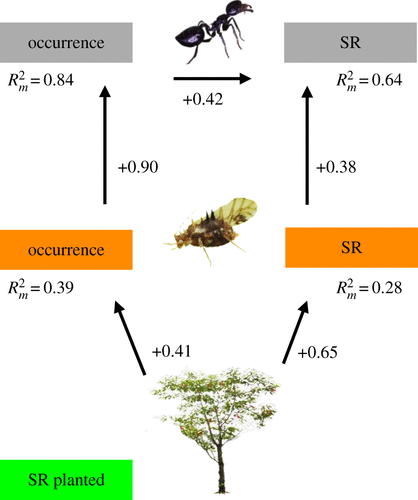Abstract:
Multi-trophic interactions maintain critical ecosystem functions. Biodiversity is declining globally, while responses of trophic interactions to biodiversity change are largely unclear. Thus, studying responses of multi-trophic interaction robustness to biodiversity change is crucial for understanding ecosystem functioning and persistence. We investigate plant–Hemiptera (antagonism) and Hemiptera–ant (mutualism) interaction networks in response to experimental manipulation of tree diversity. We show increased diversity at both higher trophic levels (Hemiptera and ants) and increased robustness through redundancy of lower level species of multi-trophic interactions when tree diversity increased. Hemiptera and ant diversity increased with tree diversity through non-additive diversity effects. Network analyses identified that tree diversity also increased the number of tree and Hemiptera species used by Hemiptera and ant species, and decreased the specialization on lower trophic level species in both mutualistic and antagonist interactions. Our results demonstrate that bottom-up effects of tree diversity ascend through trophic levels regardless of interaction type. Thus, local tree diversity is a key driver of multi-trophic community diversity and interaction robustness in forests.
Literature:
Felix Fornoff*, Alexandra-Maria Klein, Nico Bluthgen, and Michael Staab. 2019. Tree diversity increases robustness of multi-trophic interactions. Proceedings of the Royal Society B-Biological Sciences. 286:20182399. https://doi.org/10.1098/rspb.2018.2399.

